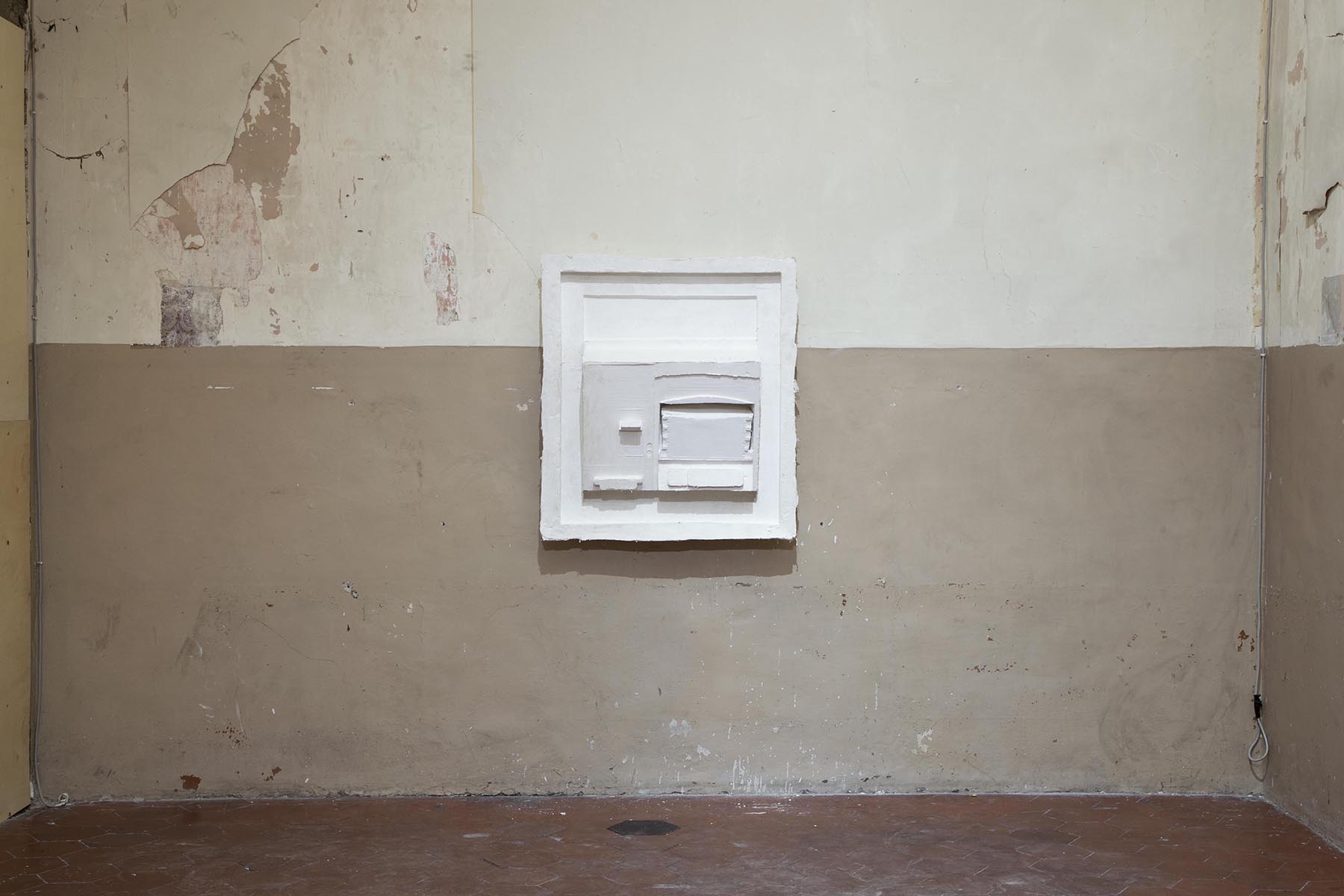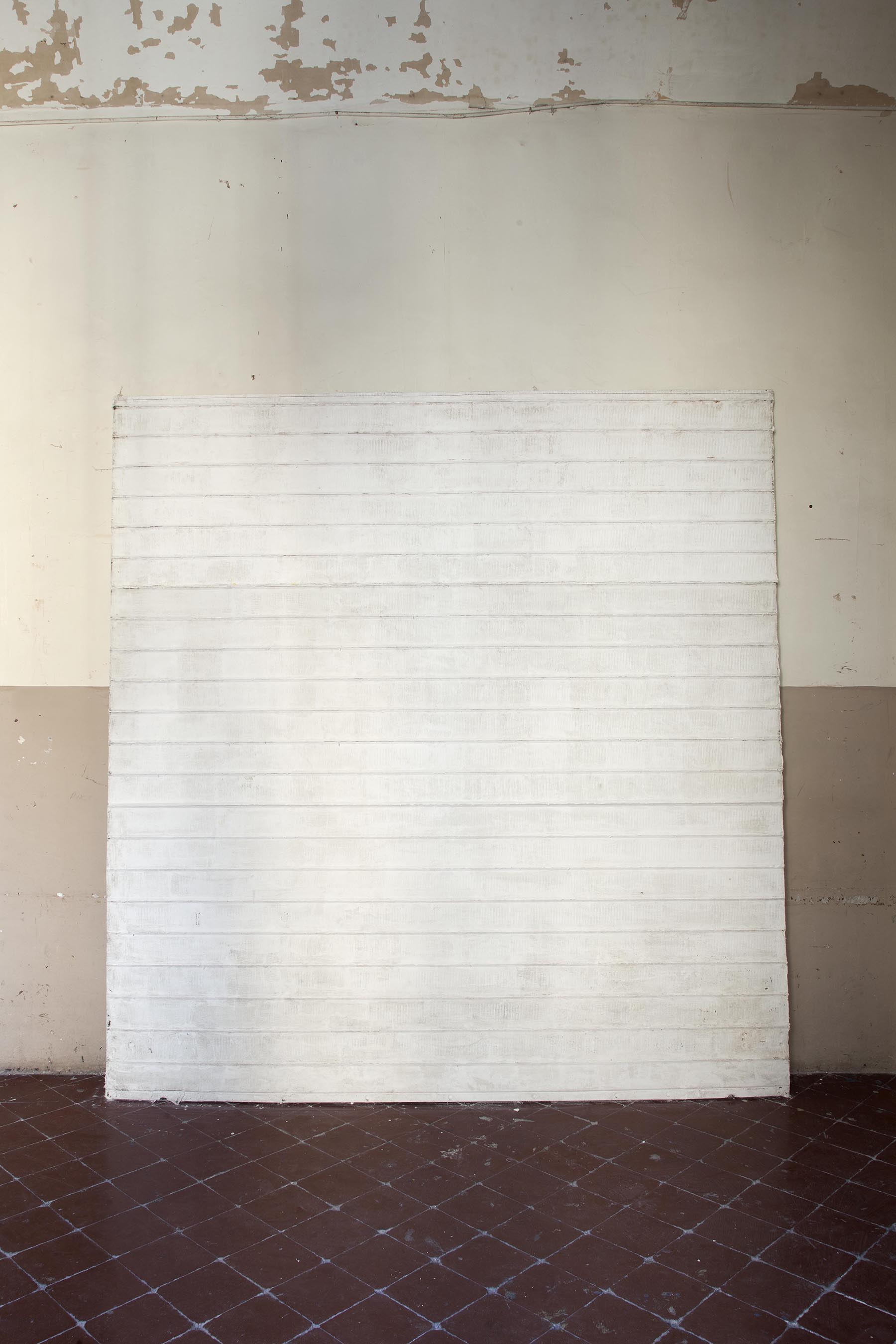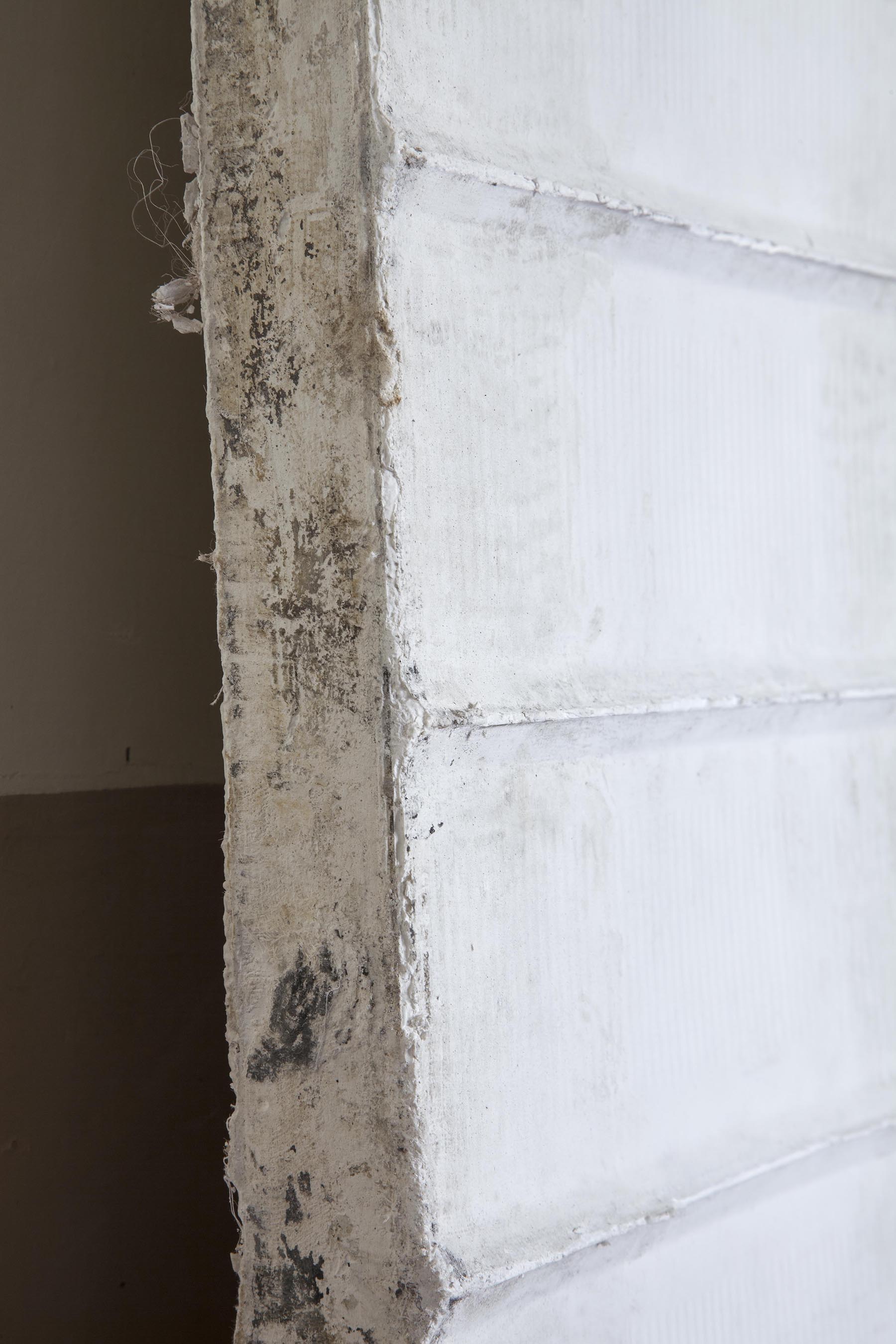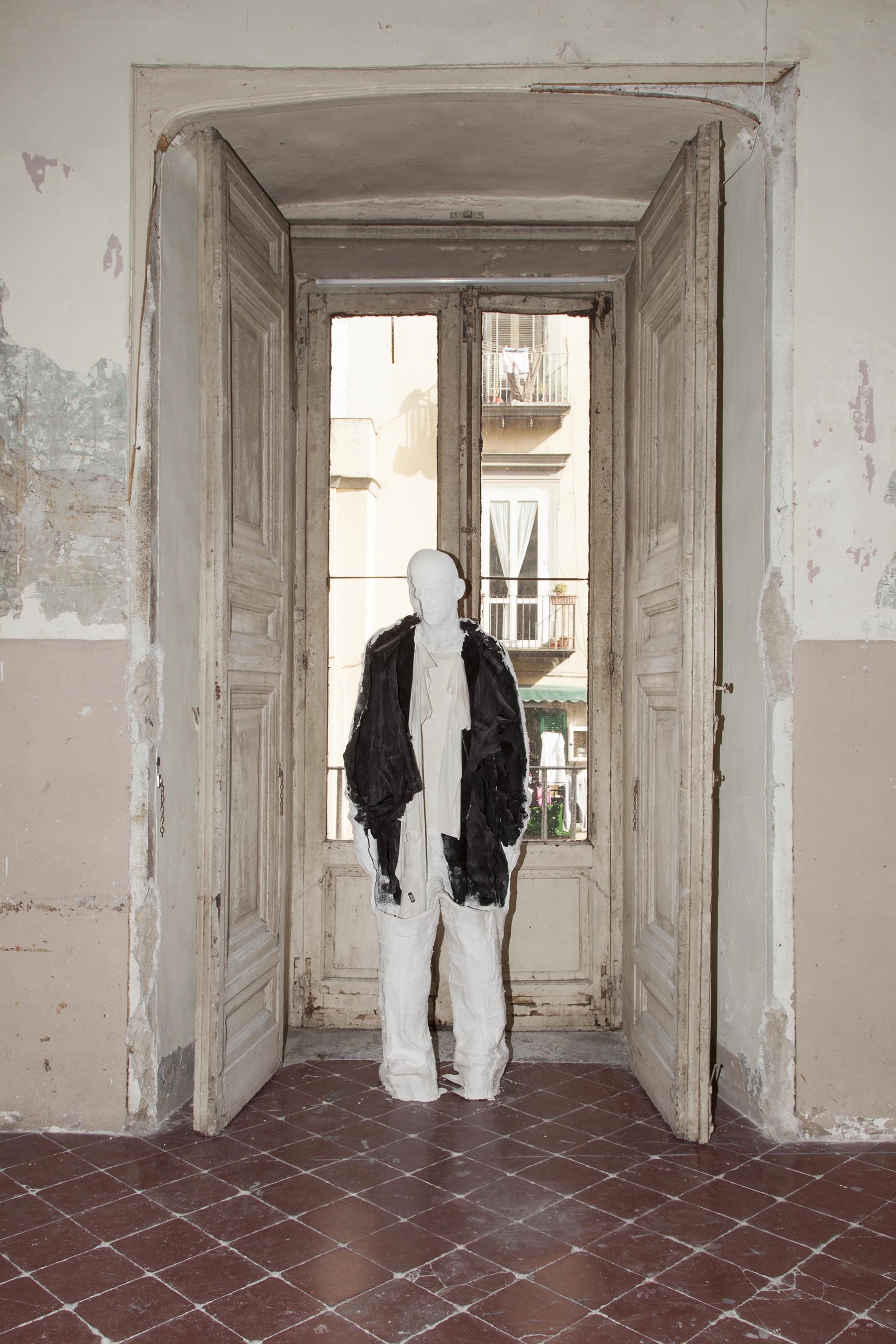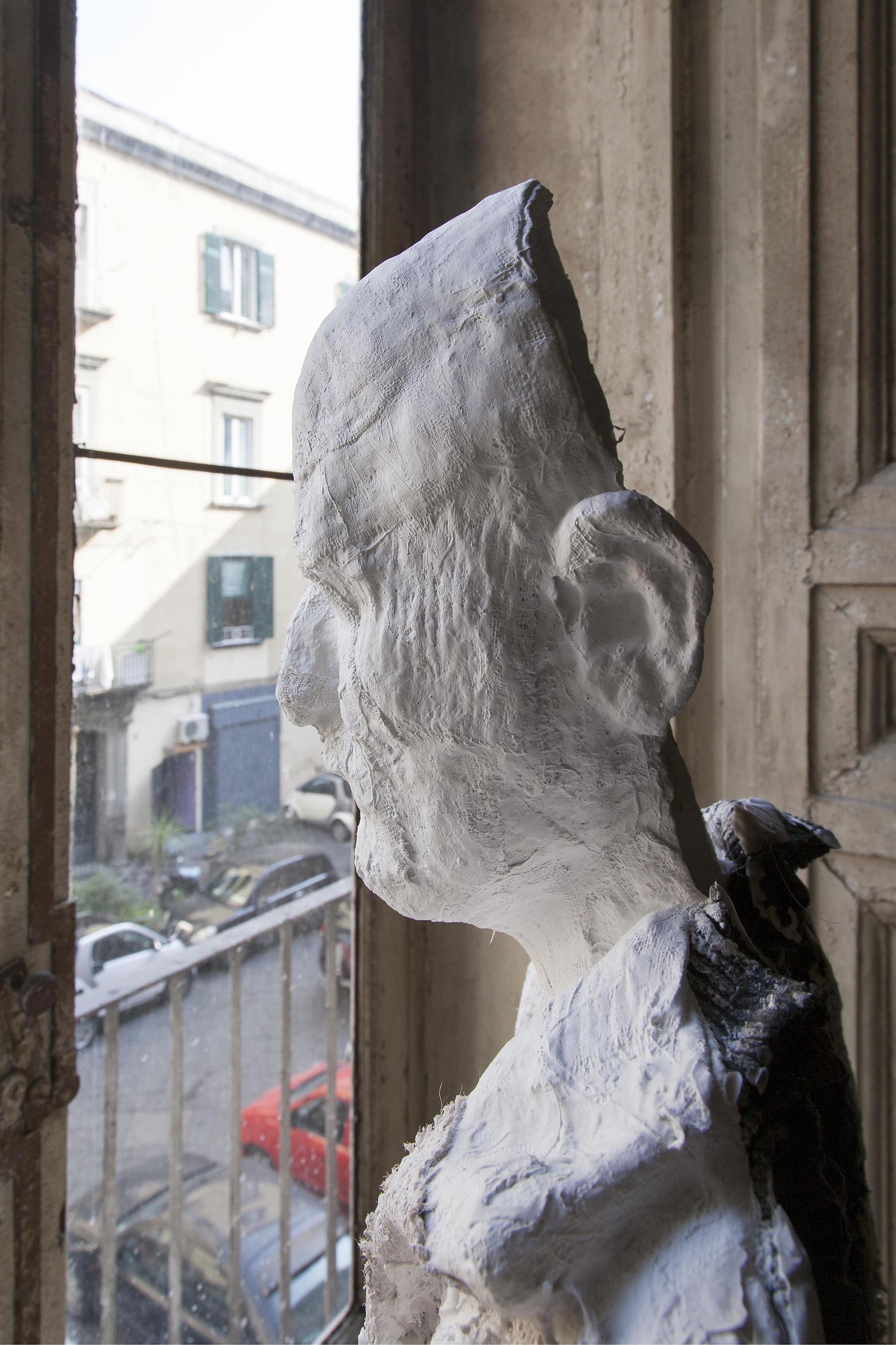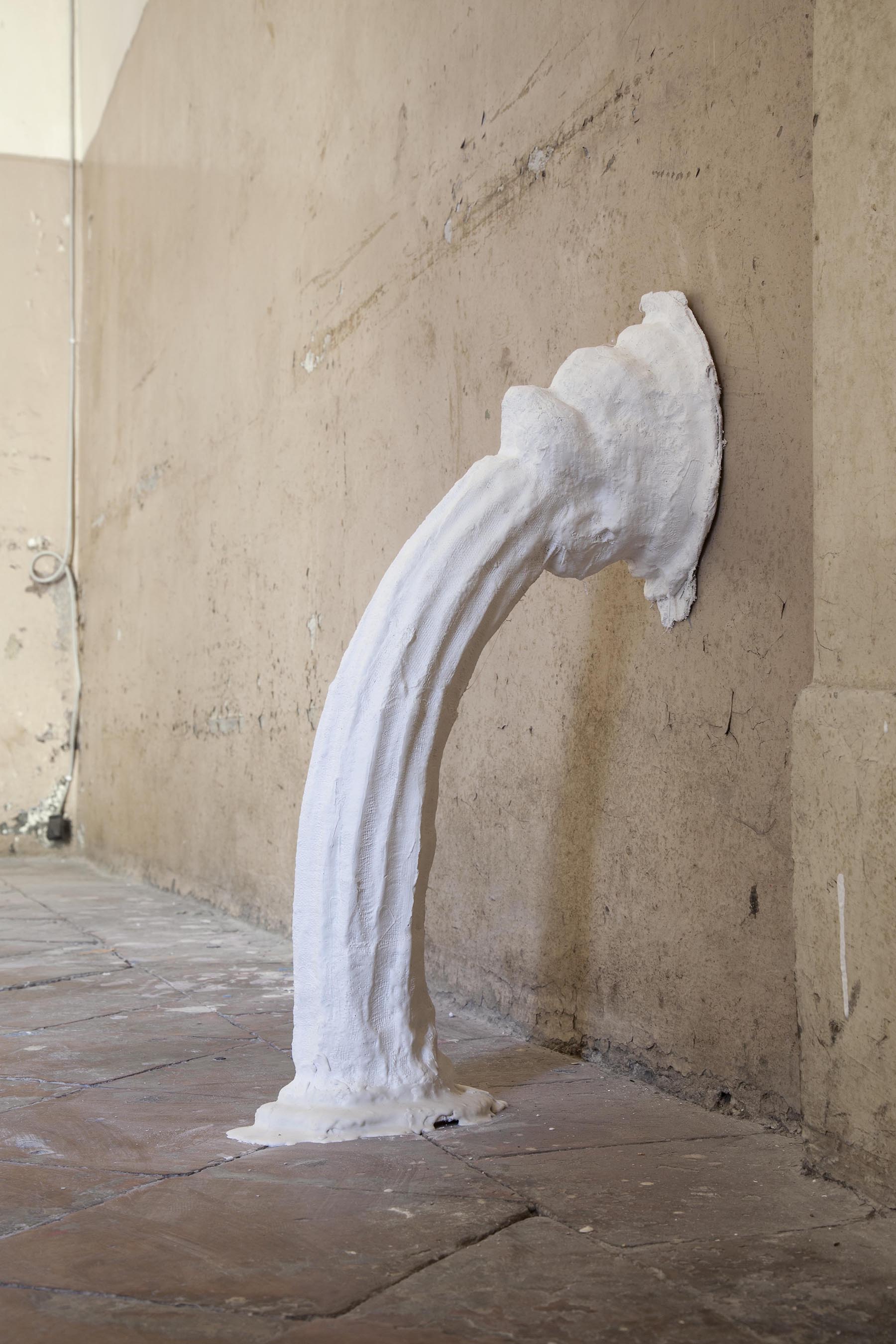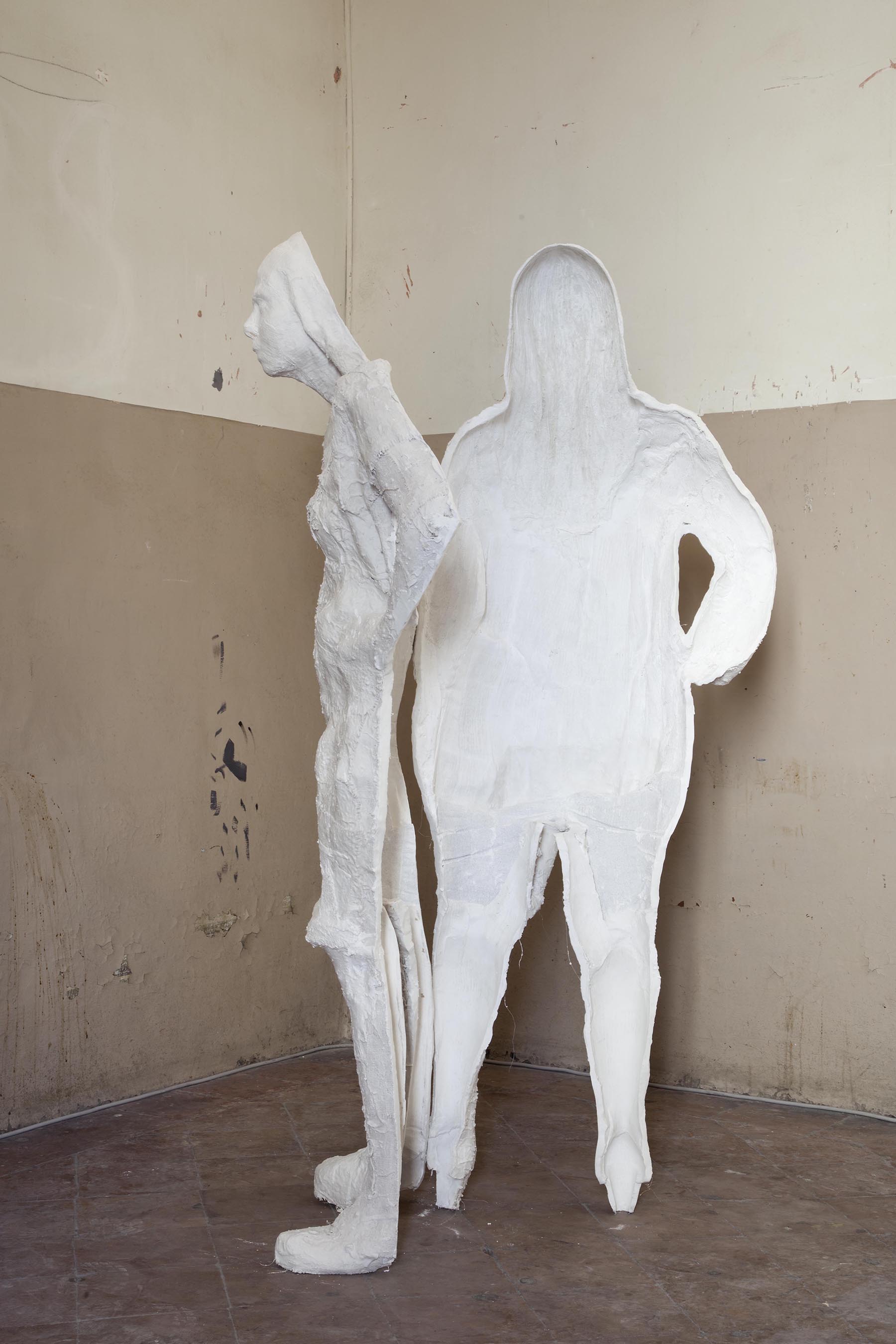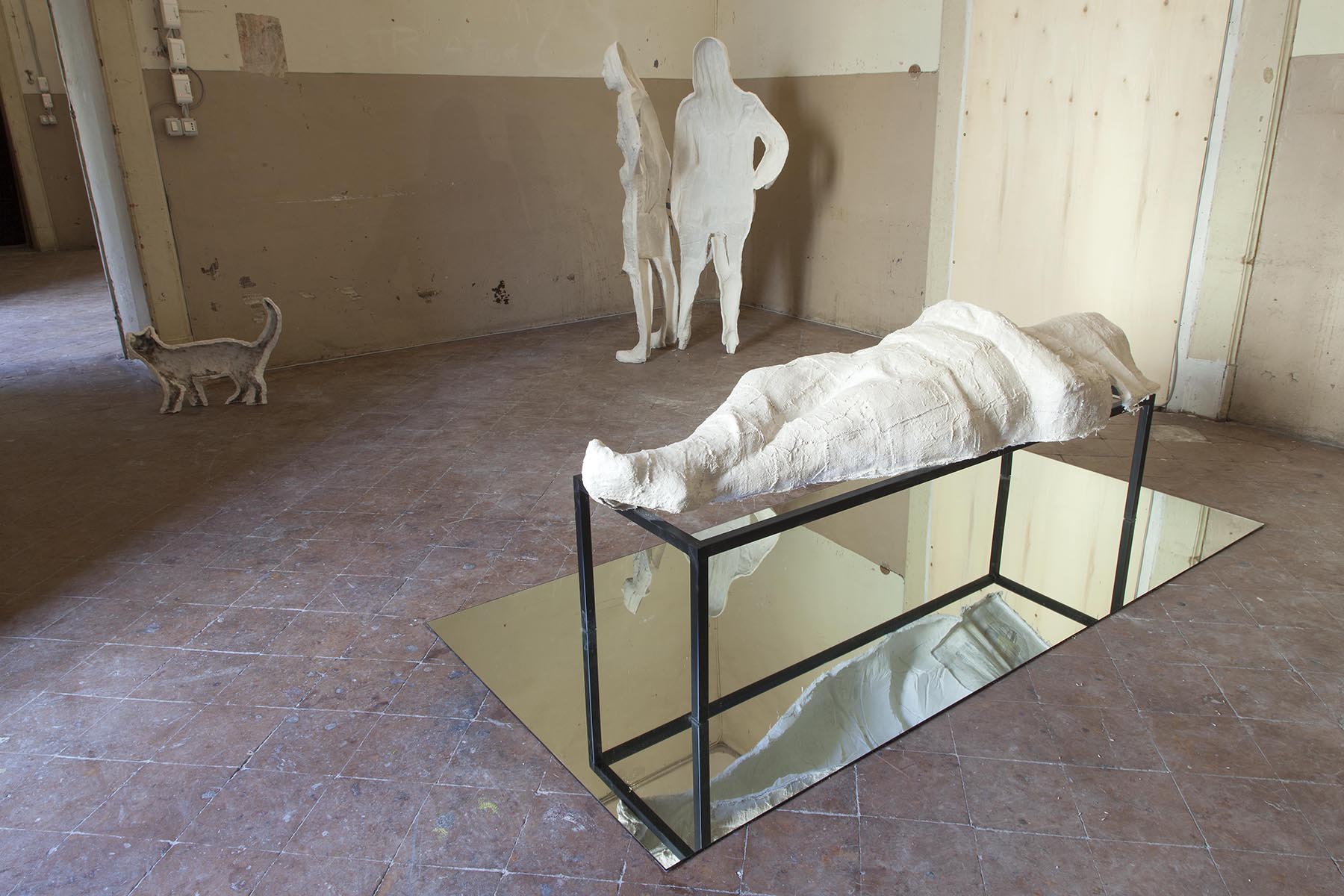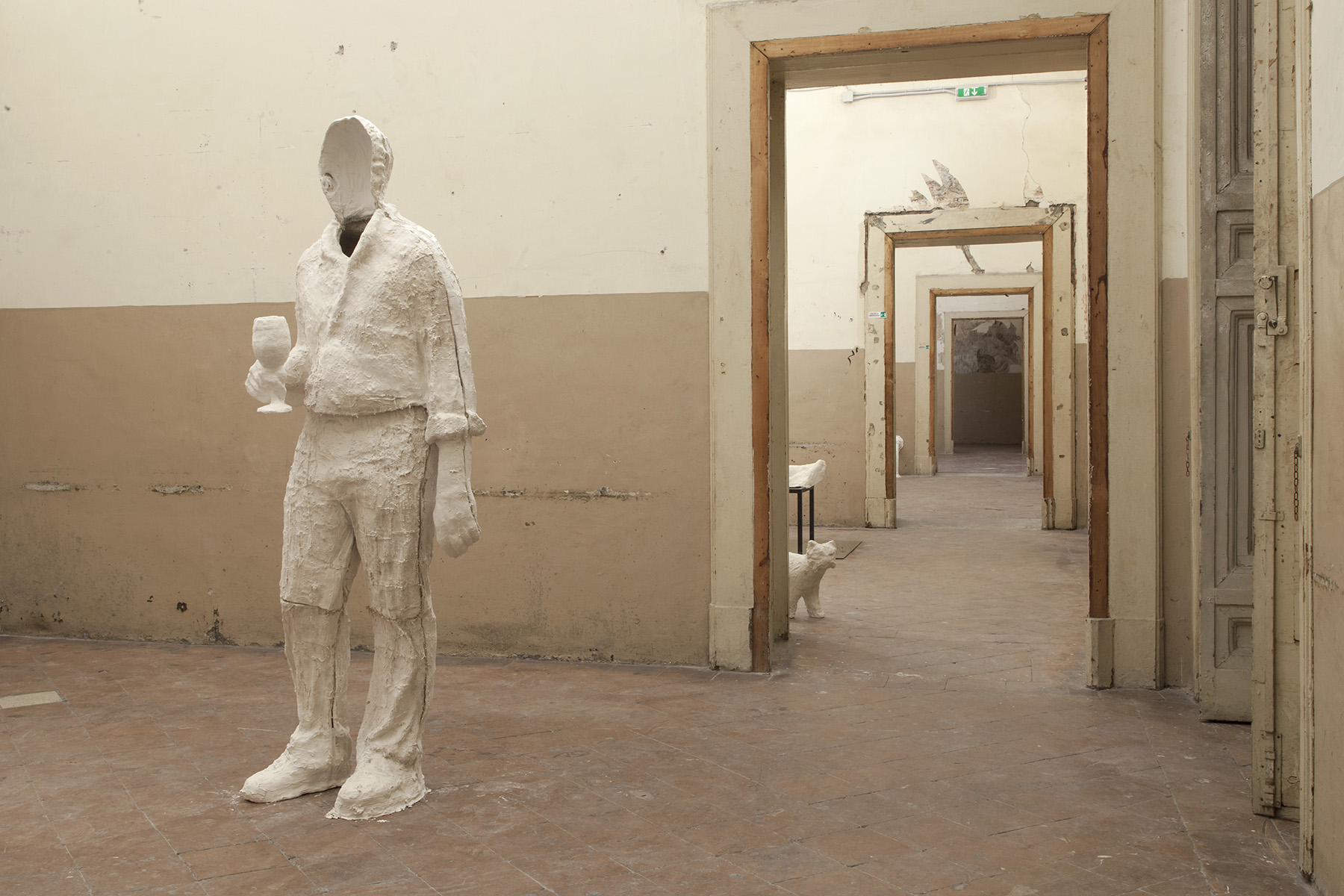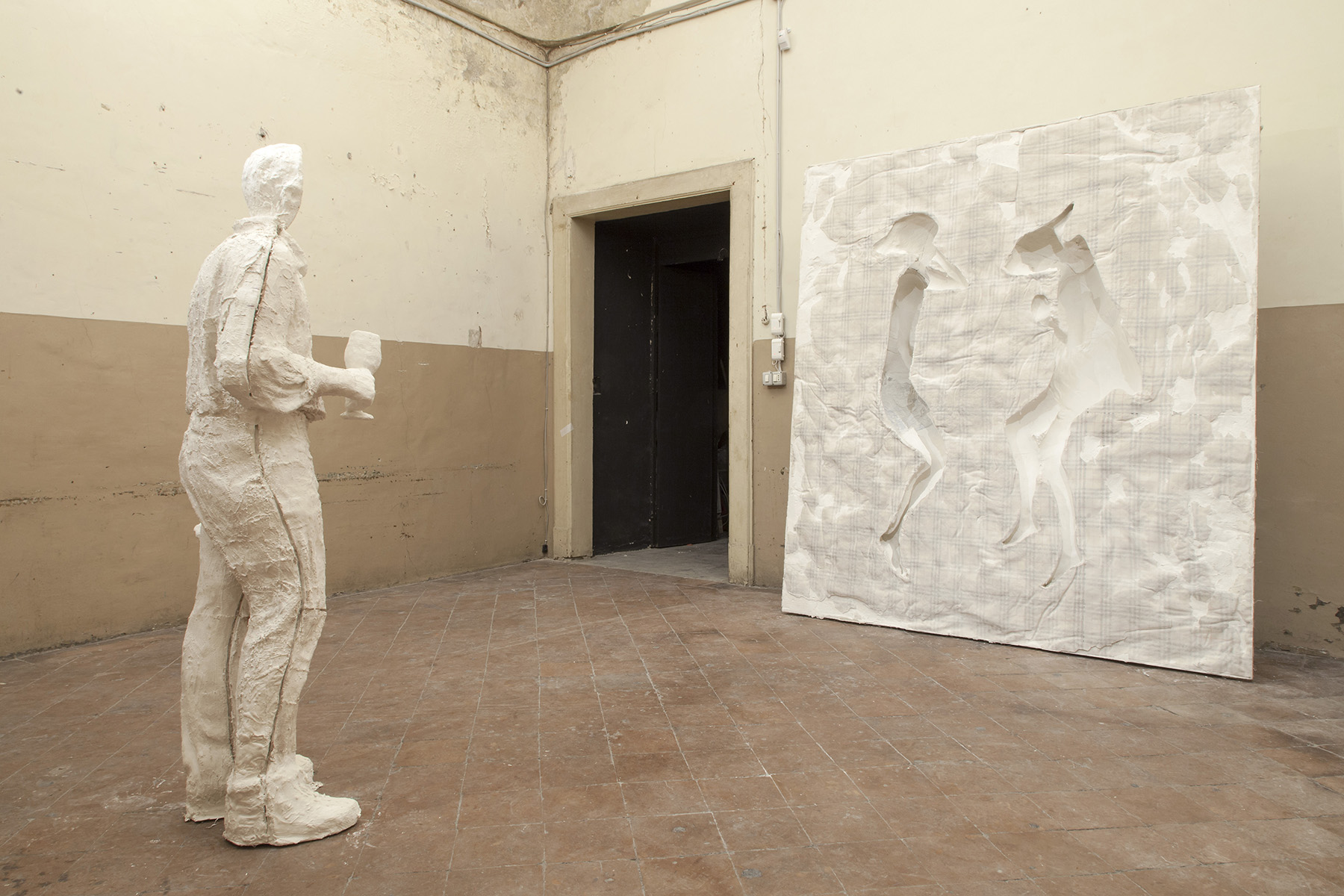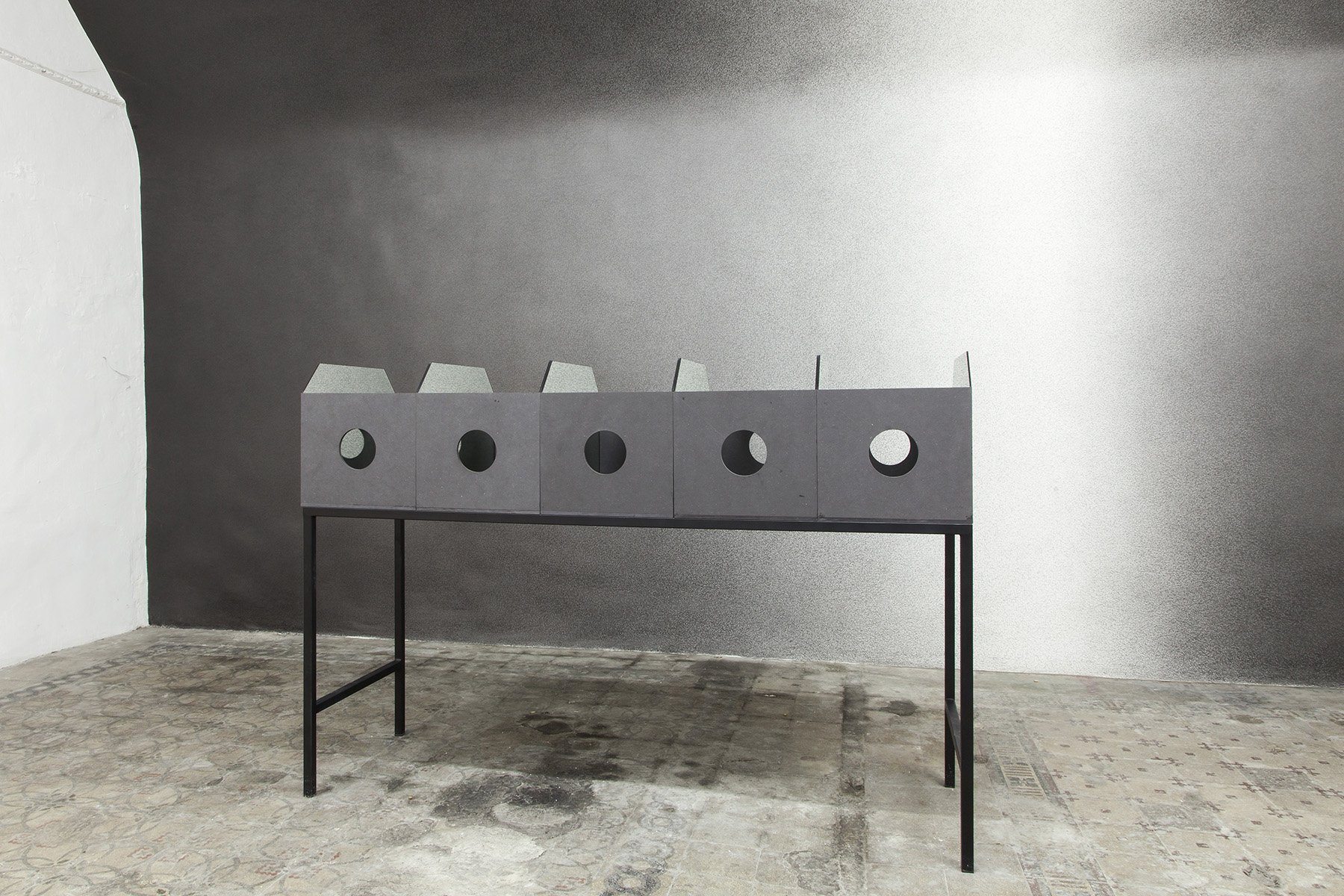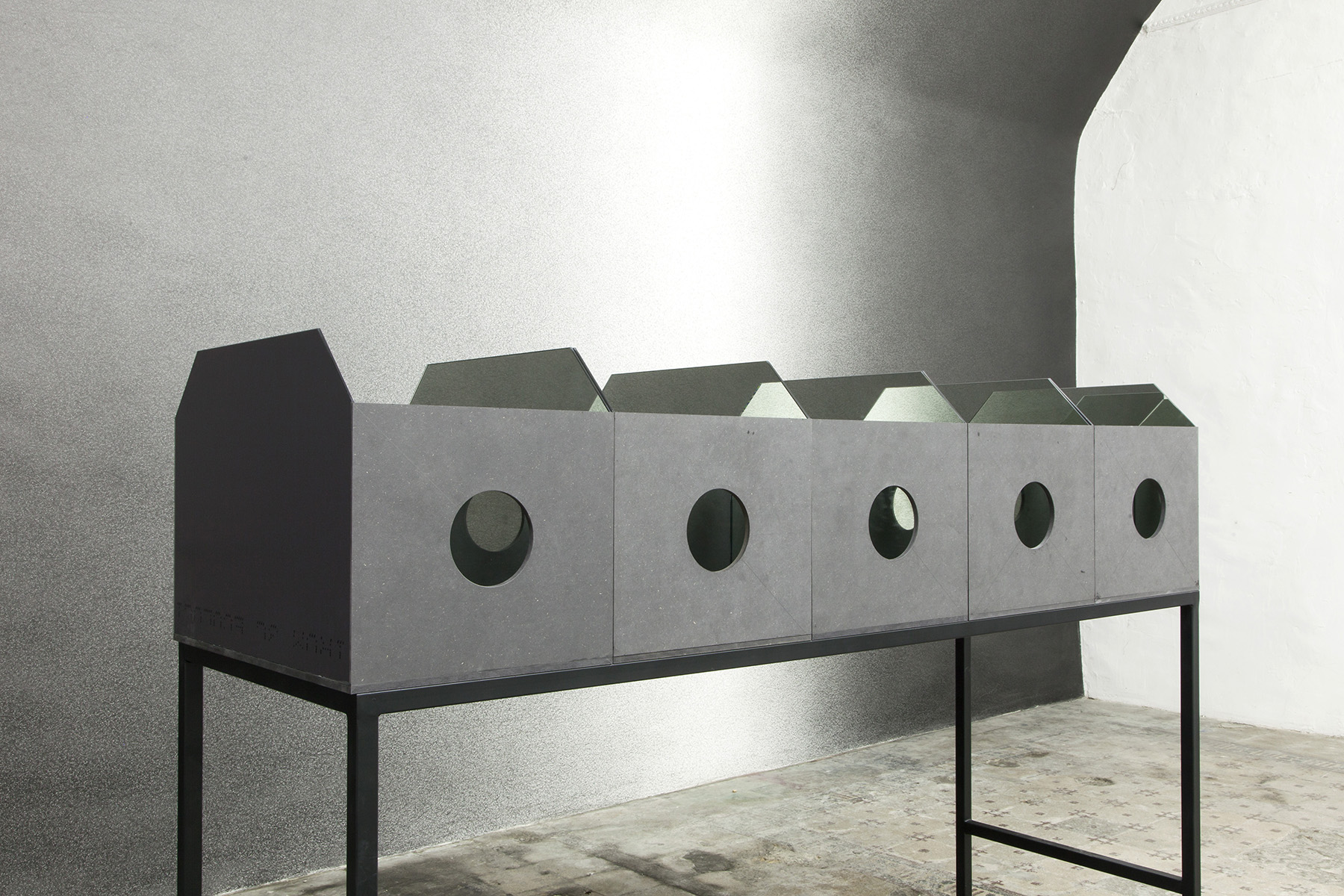26.10.2013 \\ 02.12.2013
AGEMO
Featuring new solo projects by Matheus Rocha Pitta (Rio de Janeiro) and Klaus Weber (Berlin), Fondazione Morra Greco is proud to present the third installment of a series of exhibitions entitled Hybrid Naples: L’ordine delle idee deve procedere secondo l’ordine delle cose.
Weber will install an homage to the people of Naples: cast from numerous live and still-life models – from girls on a Burberry blanket to a garage door to a cat – the negatives of plaster molds will populate the first floor of the Foundation, as if envisioned in dreams by the central character of a dreamer taking a nap on a bench. In the basement, Matheus Rocha Pitta, inspired by ancient Greek funerary steles depicting a dead person shaking hands with a divinity, will show a series of concrete slabs reminiscent of tombstones, but encrusted with current clips from international newspapers featuring – often powerful – people in gestures of agreement: shaking hands, embracing, sometimes kissing.
The main title of the series reflects on the city of Naples as a continuously rebuilt monument to hybridity. “The open city feels like Naples, the closed city feels like Frankfurt”, wrote Richard Sennett in 2006. Naples here is understood as a city remaining adaptable by improvisation, accommodating diversity and dissonance (for better or worse) rather than over-determined homogenization. But rather than just a current state of things, the idea of an ‘open’, hybrid Naples also implies three millennia of history: of a place where Greek, Etruscan, Roman, Spanish, German, Dutch, and many other presences have left their mark.
As a cultural reality and technique, hybridity – the crossing and intermingling of different cultural influences and elements – has become a factor dramatically accelerated by contemporary technological environments, from the importance of social media to artists using affordable digital technology. It directly affects what today we understand as being contemporary art: potentially, anything. However, this broadness of possible methods and motifs for current artists should not be understood as randomness. This is what the subtitle of the show is meant to remind of: “the order of ideas must follow the order of things”. It is a quote by the great Neapolitan philosopher Giambattista Vico (1668–1744). It stems from his famous main work Scienza nuova (New Science, 1725), in which he argues that civilization develops in recurring cycles. This axiom “the order of ideas must follow the order of things” asks us to consider that the shared experience of the conditions under which we live gives rise to shared ideas – rather than the other way round (an anticipation of Karl Marx famous “being determines consciousness”).
Taking this thought as a cue for the exhibition, it means that the artist’s experience and its reflection in their internal thought processes will give rise to the ideas expressed in their respective projects – rather then these ideas being randomly preconceived products ‘parachuted in’, or merely being the outcome of prescriptive instructions by a curator demanding illustrations of hybridity or any such thing.
The first installments with Max Frisinger’s deadpan sculptural interventions and Shana Moulton’s funnily surreal videos were cases in point. So were Christian Waldvogel’s homage to Giordano Bruno, a candle machine producing extra-solar planets, as well as Eric Wesley‟s contemporary version of a knight‟s suit of armor presented in a dramatic showbiz staging. Now it’s Matheus Rocha Pitta’s and Klaus Weber’s turn.
Klaus Weber’s work revolves around the idea that the art object is not so much a container but a disseminator, releasing resonances and vibes like a fountain sprouting water. Sometimes literally as a fountain: Public Fountain LSD Hall (2003) involves a Victorian-style lead glass fountain emitting homeopathically potentized LSD; while the actual substance is not present anymore, the homeopathic argument is that water has ‘memory’, i.e. that the substance in question leaves an ‘imprint’ on the molecular structure that thus can have an effect despite the substance’s absence – in this case, the effect being actual hallucinations. The Large Dark Wind Chime (Arab Tritone) (2009) is another case in point: it literally emits dark tonal vibrations. The chime’s long aluminium tubes produce an eerie drone – it is tuned to a triton, the restless-sounding interval of three whole tones. Named diabolus in musica in the Western musical tradition, it was largely banned from composition until Romanticism. With Weber’s Wind Chime tuned to a tritone based on an Arabic microtonal scale, the interval is further layered with anxieties that are present both in historic Western Orientalism as well as contemporary islamophobia.
Weber’s Naples project Agemo – like Rocha Pitta’s – involves the use of casts and molds, this time using plaster. However here, most of the casts are made from live models – inhabitants of Naples, with their identities however remaining anonymous. The central figure on the first floor of the Foundation is the ‘sleeper’, taking a nap on a bench, with his face covered under a newspaper. We can imagine the scene unfolding as taking place in his imagination/dream – the cat strolling along, the garage door, the figure of a drunk leaning against the wall, or the couple on a Burberry blanket. However, we don’t get to see the ‘actual’ volume of the figures, but only the negative cast, either from the outside presenting us with a rough plaster surface, or from the inside as an inversion that – through an optical illusion – can look like the actual protruding features of the person, an effect that in places is emphasized by traces in the cast such as a bit of hair or lipstick. Finally, there is one piece on the ground floor that gives a cue to the idea behind Agemo and it is Phantom Box – a box with holes in it reminiscent of the ones used in therapy for people having lost a leg, or arm, as a means to cure phantom pain. The remaining limb is doubled through a mirror, so that the brain can receive visual feedback and thus ‘de-sensitize’ the post-traumatic pain. In Weber’s version, the box has many holes, thus suggesting a collective effort to sense the phantoms – echoing the collective of phantoms on the first floor.
All images Courtesy Fondazione Morra Greco, Napoli
© Amedeo Benestante

